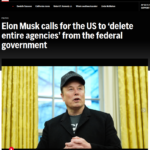It is contract# 600-12-200, a start date of Nov 16, 2012, end date of Dec 31, 2015.
Purpose: “Deploy 2 battery switch stations and 6 battery-switchable electric taxis, and collect data about operation of the eTaxis and switch stations.”
The surprise comes when the subcontractors are listed:
Better Place Mobility Services, Inc
FEV, Inc
Coda of Silicon Valley
It’s at this point where my mind goes “HUH?”. The point of this project is to deploy a Better Place fast battery swapping network in the SF Bay Area. Up until now the only partner for Better Place is Renault, in the form of the Renault Fluence. Better Place has long claimed their battery swapping system could be used on other electric cars, but Renault is the only partner. To have Coda of Silicon Valley involved means.. what?
The basic design required for the Better Place quick swap system is for the battery pack to drop out the bottom of the car. Fortuitously, Coda Automotive designed their electric car this way, with a battery pack installed in the bottom of the car. Also fortuitously, I’d hazard a guess that Coda Automotive is in a position to be flexible in building a special version of their car to swap battery packs in a Better Place station.
What might be interesting is if Coda plans to officially support the Better Place quick battery swap system in a future model. Coda is not in a position to make use of such support today, because the company does not distribute electric cars in countries where Better Place has swap stations in operation.
However, last April the company did announce a deal with Great Wall to jointly develop affordable electric cars![]() . A part of that deal is for a global electric car distribution system, with Great Wall handling distribution outside the U.S. Hence, in 2014ish there will be a line of affordable electric cars jointly developed by Coda and Great Wall that could plausibly be distributed in countries where Better Place is operational. If those cars were planned to support the Better Place system, it makes some sense for Coda to do some work to test their implementation of the system, and what better way than to deploy Coda electric cars in the eTaxi program.
. A part of that deal is for a global electric car distribution system, with Great Wall handling distribution outside the U.S. Hence, in 2014ish there will be a line of affordable electric cars jointly developed by Coda and Great Wall that could plausibly be distributed in countries where Better Place is operational. If those cars were planned to support the Better Place system, it makes some sense for Coda to do some work to test their implementation of the system, and what better way than to deploy Coda electric cars in the eTaxi program.
One thing which would rightfully delay Better Place from launching service in the U.S. is the lack of vehicles certified for use on American roads that are compatible with the Better Place system. Renault’s Fluence is not distributed in the U.S. but Coda’s electric car is. I’m guessing it would be quicker to modify and recertify the Coda with the Better Place system, than it is to bring the Fleunce to the U.S.
Admittedly that is a bit of guesswork, but at least it is educated guesswork.
The other contractor, FEV Inc![]() , is an automotive engineering company.
, is an automotive engineering company.
Here’s a bit more from the contract describing the goals and purpose.
Create the first North American eTaxi Corridor, providing unlimited range for participating vehicles in less time than it takes to fill a tank of gas
Operate a fully functional zero emission switchable battery EV taxi fleet
Raise awareness on EVs with a million consumers through the EV taxi experience over this and future phases
Demonstrate that the battery switchable vehicle (XBEV) taxis can serve customers at a rate similar to that of the comparable hybrid taxi service within the corridor
Show the battery switch concept’s robustness by demonstrating a minimum “down time” for the equipment that is on the order of that for the comparable internal combustion engine (ICE)/hybrid taxi average
Demonstrate commercial-intent XBEVs without any range or use restrictions within the travel corridor
All objectives listed above to be achieved within a program duration of three (3) years
On October 4, 2012, the SF Examiner published a story about delays in the SF Bay Area eTaxi program (http://www.sfexaminer.com/local/2012/10/san-francisco-electric-taxi-program-faces-setbacks![]() ) with these points
) with these points
Managed by the San Francisco Municipal Transportation Agency
Region-wide
Fleet of 61 electric cars, and four battery swapping stations in San Francisco and San Jose
Better Place
The cars would be added to the Yellow Taxi fleet
Originally scheduled to be running in 2012
Now scheduled for 2013
“Frankly, a lot of people forgot about it,” Mark Gruberg, spokesman for United Taxicab Workers said.
The program was originally announced in October 2010 (http://www.businesswire.com/news/home/20101027006760/en/Place-Bring-Electric-Taxi-Program-San-Francisco![]() )
)
Better Place to Bring Electric Taxi Program to the San Francisco Bay
Area
Consumer Exposure Potential
via the Metropolitan Transportation Commission, today announced a
commitment to bring a switchable battery, electric taxi program to the
Bay Area in partnership with the cities of San Francisco and San Jose to
further cement the region’s position as the “EV Capital of the U.S.”
on-ramp for technology transfer to the mass-market. Over the next three
years, the program will deploy and operate four battery switch stations
in the San Francisco to San Jose corridor, that supports a fleet of
zero-emission, switchable taxis. This fleet will offer many thousands of
Bay Area residents and visitors their first EV experience. The program
also has the potential to help California and the Bay Area meet their
aggressive energy and climate policy goals when scaled to the entire
region.Electric taxis are the gateway to clean cities. While gas-powered taxis
are fewer in number than personal cars, these high-mileage vehicles are
disproportionally responsible for harmful greenhouse gas (GHG) and other
tailpipe emissions, so electrification of this fleet is essential to
making a real impact on air quality and oil consumption. Since taxis
drive nearly continuously, they require instant charge of their battery
to maintain quality of service and continue serving the public. Given
the taxi business, waiting three to four hours for standard charge is
not an option. Battery switch is the only option that allows the driver
to recharge in less time than it takes to refuel, the means of range
extension for today’s gas-powered taxis.
Better Place has been successfully operating an EV taxi program in
Tokyo, supported by the Japanese government. The pilot project began on
April 26, in cooperation with Nihon Kotsu Co., Tokyo’s largest taxi
operator, and focuses on the feasibility of an automated battery switch
process as means for taxis to have instant, zero-emission, range
extension. In the first 90 days of the trial, the EV taxis drove over
25,000 miles using battery switch as the primary means of “instant
charge” or range extension.
“Today marks a significant milestone in our march towards accelerating
the mass adoption of electric cars in the Bay Area. This program will
enable us to reach a broad audience and demonstrate a solution that
offers drivers a more convenient option than today’s gasoline cars,”
said Jason Wolf, VP of North America for Better Place. “The battery
switch model is gaining momentum globally. Our Tokyo EV taxi program has
proven to be an example to major metropolitan areas around the world,
and we are pleased that the MTC recognized this and the Bay Area is
taking a leadership position in the U.S.”
This program will be developed in partnership with key regional
stakeholders and organizations that are working together to build Bay
Area EV leadership, including:
Taxi operators and car sharing programs: Yellow Cab Cooperative,
Yellow Checker Cab Inc.;
Regional and state agencies: Bay Area Air Quality Management District
Consumer and EV organizations: Plug-in America, AAA Northern
California;
Leading regional business/community organizations: Silicon Valley
Leadership Group, Bay Area Council, Bay Area Climate Collaborative,
Joint Venture: Silicon Valley Network, and others;
San Francisco Public Utilities Commission
“In November 2008, I was joined by Oakland Mayor Ron Dellums, San Jose
Mayor Chuck Reed and Better Place in calling for making the San
Francisco Bay Area the EV Capital of America,” said San Francisco Mayor
Gavin Newsom. “This partnership with Better Place to build the first
electric taxi program with switchable battery EVs in the U.S. helps make
this a reality.”
Better Place remains on-track in developing and deploying countrywide
networks of charging and battery-switching infrastructure in its first
two markets, Israel and Denmark, for commercial launch in late 2011.
Better Place will begin its initial network deployment in Canberra,
Australia in late 2011 as part of a nationwide infrastructure roll out.
Tokyo Taxi Video: http://www.betterplace.com/the-company-multimedia-videos-detail/index/guid/ac58e4e7-0461-4e26-b771-2ceb72dcb5c8![]()
About Better Place
Better Place, the leading electric vehicle services provider, is
accelerating the global transition to sustainable transportation. Better
Place is building the infrastructure and intelligent network to deliver
a range of services to drivers, enable widespread adoption of electric
vehicles, and optimize energy use. The Better Place network addresses
historical limitations to adoption by providing unlimited driving range
in a convenient and accessible manner. The company works with all parts
of the transportation ecosystem, including automakers, battery
suppliers, energy companies, and the public sector, to create a
compelling solution. Based in California and privately held, Better
Place has operating companies in Israel, Denmark, and Australia. More
information is available at http://www.betterplace.com![]() .
.
Contacts
- Highway design could decrease death and injury risk, if “we” chose smarter designs - March 28, 2015
- GM really did trademark “range anxiety”, only later to abandon that mark - March 25, 2015
- US Government releases new regulations on hydraulic fracturing, that some call “toothless” - March 20, 2015
- Tesla Motors magic pill to solve range anxiety doesn’t quite instill range confidence - March 19, 2015
- Update on Galena IL oil train – 21 cars involved, which were the supposedly safer CP1232 design - March 7, 2015
- Another oil bomb train – why are they shipping crude oil by train? – Symptoms of fossil fuel addiction - March 6, 2015
- Chevron relinquishes fracking in Romania, as part of broader pull-out from Eastern European fracking operations - February 22, 2015
- Answer anti- electric car articles with truth and pride – truth outshines all distortions - February 19, 2015
- Apple taking big risk on developing a car? Please, Apple, don’t go there! - February 16, 2015
- Toyota, Nissan, Honda working on Japanese fuel cell infrastructure for Japanese government - February 12, 2015












